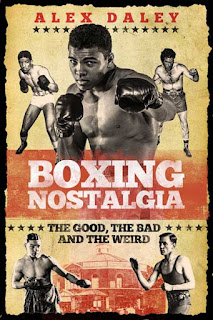 |
| Terence Murphy |
Long before terrestrial broadcasts made TV stars of British fighters, attending a live show was how most fans saw their boxing.
In the immediate post-war years, live boxing was widespread and fight followers were happy to venture out to shows. But as TV’s popularity exploded (licence take-up rose from 763,000 in 1951 to 3.2 million in 1954), boxing promoters capitalised on the new medium.
In the early 1950s, there was just one (BBC-run) British TV channel, with haphazard coverage of boxing and little thought given to what fights were shown. That all changed on 22 September 1955 as Britain’s first commercial TV station, ITV, made its maiden transmission.
On the schedule that evening – alongside drama, cabaret and music – was a live pro boxing match between Terence Murphy (Canning Town) and Lew Lazar (Aldgate), for the vacant Southern Area middleweight crown. Promoter Jack Solomons had hired Shoreditch Town Hall for the event – the first time boxing was staged there.
As well as being the first UK commercial TV boxing match, it was the first fight made especially for TV. ‘Usually a fight is made and television steps in after,’ observed Boxing News. ‘This time the match was picked as being a showpiece for the sport.’
And Solomons could have hardly chosen a better showpiece than Lazar vs Murphy. Their first fight, a thrilling draw in December 1954, was the Boxing News Fight of the Year. ‘Every time the young East London greengrocer fights, he has the crowd on its feet,’ wrote Boxing News of Murphy, ‘and frankly we couldn’t think of a better shop window for boxing on TV than “Terrible Terence”.’
Terence, now 81 [at the time of republishing this piece, Terence is 85], is proud to have been the first sportsman to appear on commercial UK TV. ‘I was first because when the camera first showed the fight, it was a close-up of me,’ he explains.
‘At 9 o’clock sharp, there was a loud rap on my dressing room door. “Murphy in the ring,” cries Mike Milligan, the whip for the evening. The butterflies in my stomach do a summersault, and off we go. We’re introduced, the bell rings and we’re on TV – or so we think!’
An overrun in ITV’s previous programme meant TV audiences picked up the fight in the interval between rounds one and two. Had there been a first-round KO, the broadcast would have been a disaster.
‘Just before our fight, the viewers had seen a beer commercial,’ recalls Terence. ‘I must have been told a thousand times how the last shot of the advert was a fellow drinking his pint, and the next was of me spitting into a bucket. It seemed like the two shots were completely in sync, which gave the TV viewers a laugh!’
Shoreditch spectators and an estimated two million TV viewers enjoyed the thrilling 12-round bout, but Terence, who had sweated and starved to make 11st 6lb, was disappointed. ‘I could not have tried harder to make the weight or to win the fight,’ he reflects. The consensus among the press – Boxing News included – was that Terence deserved the decision; but referee Jack Hart made Lazar the winner.
‘Terrible Terence’, as the press dubbed him, had 28 pro bouts between 1953 and ’57, retiring aged 22.
Article © copyright Alex Daley.
This piece by Alex Daley (first published in Boxing News on 24 December 2015) is one of 132 articles featured in the anthology Boxing Nostalgia: The Good, the Bad and the Weird. You can find out more or buy a copy here.

